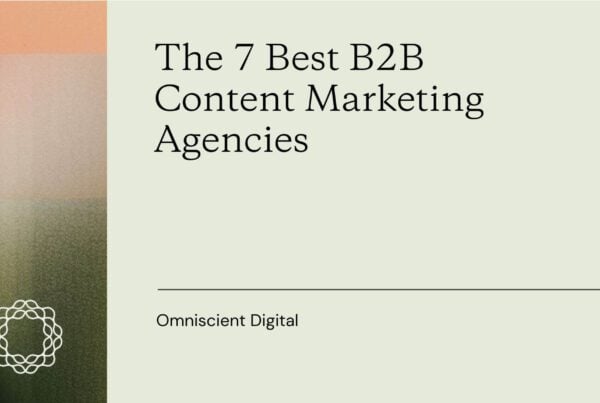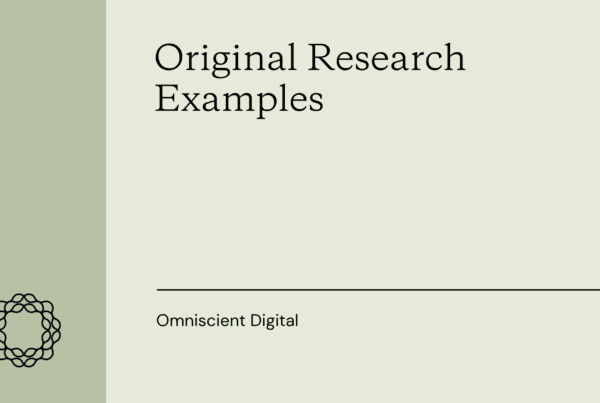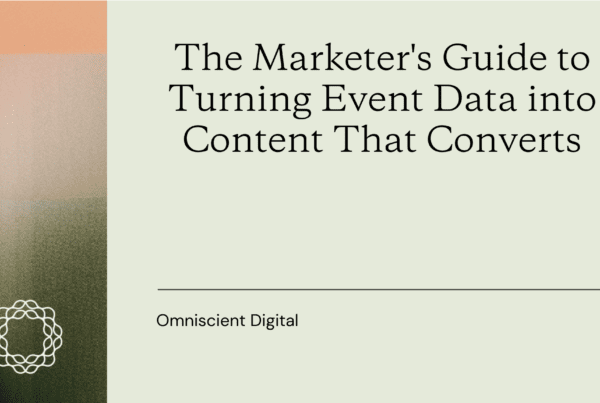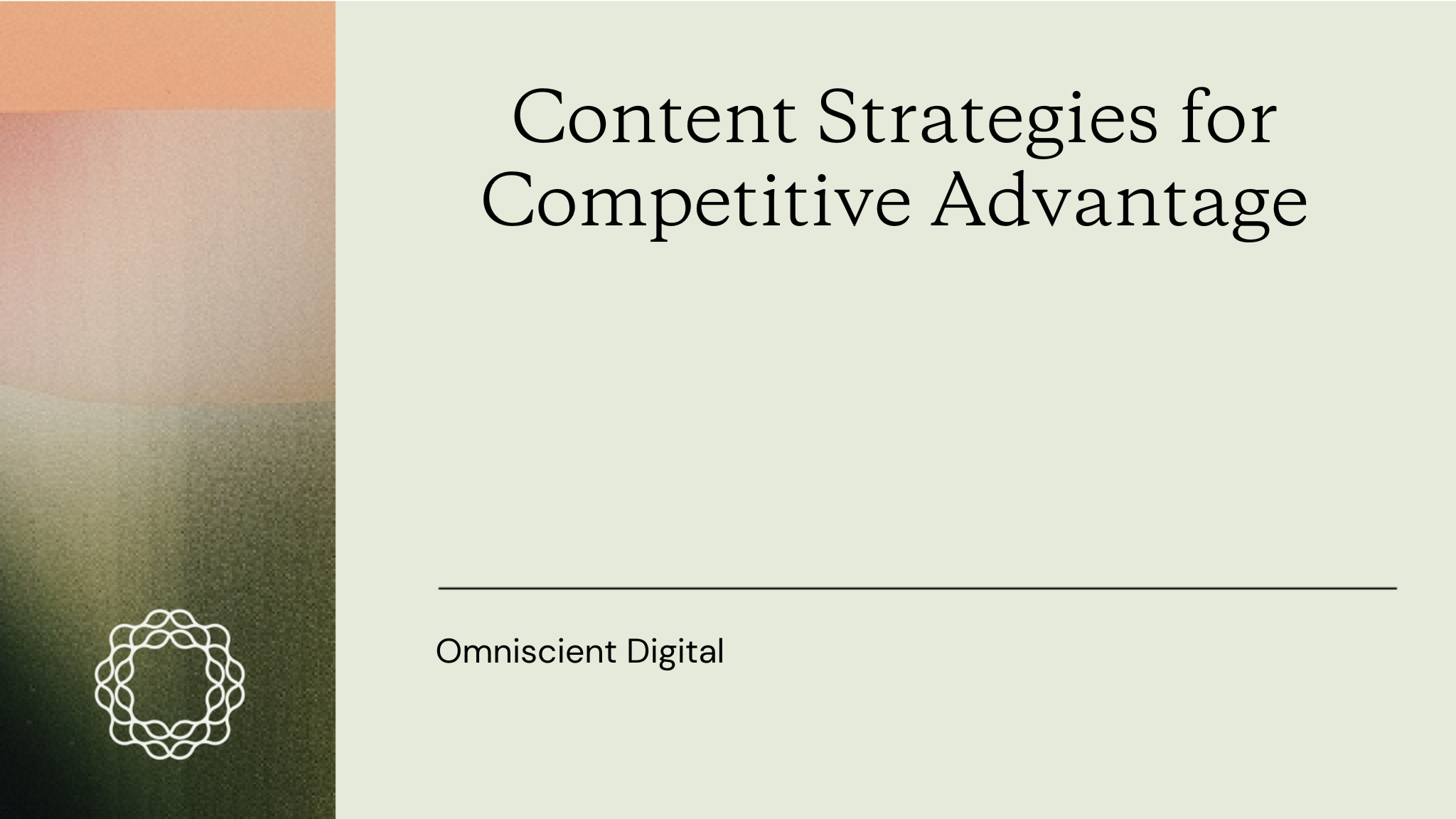
For many even experienced marketers and SMM specialists, a content strategy remains a simple calendar of publications on social networks. Write down your plan in tables once a week or even once a month—and that’s it, you can work on another project. Unfortunately, this is far from today’s reality. In the conditions of an overloaded information field, standard approaches no longer work. To stand out, it’s not enough to simply create content—you need to create value.
An effective content marketing strategy strengthens brand awareness and builds trust, generates leads and increases conversion, and optimizes marketing efforts, which reduces the budget for incoming traffic. Above all, it gives a competitive advantage if it’s based on deep audience analysis, unique positioning, and the use of innovative tools such as artificial intelligence (AI) and predictive analytics. Let’s figure out how to make a content strategy your competitive advantage.
Understanding your audience for competitive content
Creating effective content begins with understanding who exactly is your target audience. The mistake many companies make is to limit themselves to superficial demographic data. The real value is hidden deeper in understanding your potential customers’ psychological characteristics, motivations, and needs.
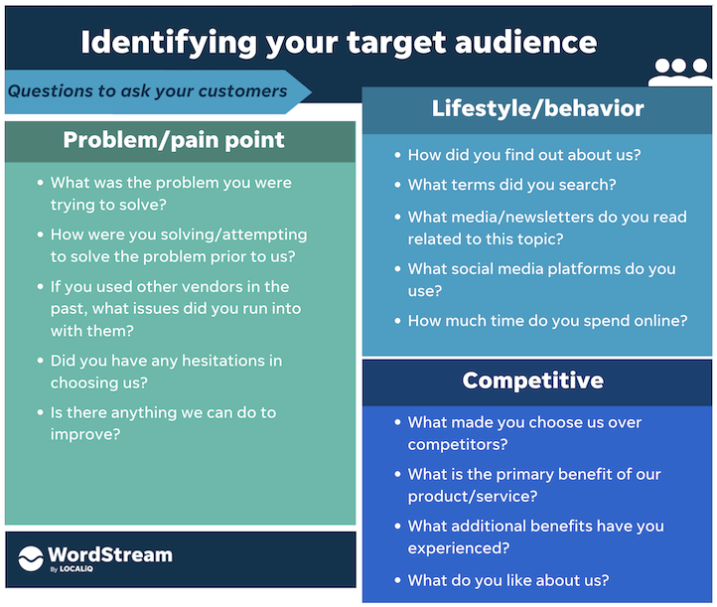
Personal development
Modern analytics tools allow you to obtain data on user behavior in real time. It’s worth collecting as much information as possible, such as:
- Geography (country, city, language)
- Age and gender
- Income and profession (for B2B — business niche, position)
- Education and marital status (if important for the product)
- Social networks
- How they search for information (Google, YouTube, referrals)
- What content formats do they prefer (video, articles, stories)
- How they make decisions (impulsively or after comparison)
- What worries them
- What objections prevent them from buying
- Dreams and desires
Analyzing this data helps to identify non-obvious patterns—like what topics concern the audience, what objections prevent them from making a purchase, and at what stage of the customer journey the outflow most often occurs. If there’s a large flow of information, AI tools can also be helpful for analysis.
You can use Google Analytics, Facebook Insights, and CRM systems. An even more valuable source of information is direct communication with the audience. Webinars with Q&A sessions, discussions in professional communities on LinkedIn, and comments under posts—all these provide invaluable insights into the real needs of your potential customers. To take it a step further, use a good video hosting platform to ensures that live webinars and content reach your audience in high quality, while making it easy to track engagement and gather valuable insights.
Addressing audience challenges, pain points, and needs
The modern consumer is tired of overtly advertising content. They’re not looking for stories about the product but ready-made solutions to their problems. That is why a problem-oriented approach to content creation is becoming the most effective.
Instead of a traditional description of the product functionality, it’s much more effective to show how this product solves specific customer problems. For example, instead of the article “Advantages of our CRM solution,” it’s better to write “How to reduce the time for processing applications by 40%: a real case of a company from your industry.”
Content in the form of step-by-step guides is especially valuable. Detailed instructions that lead the reader from the problem to the solution demonstrate the expertise of the company and gently lead to the need to use your product or service. If you have no experience writing such content, it’s better to turn to professionals from a trusted writing service. They will create text content and adapt existing content to any platform.
Data visualization is another powerful tool. The audience perceives and remembers complex information presented in the form of infographics or diagrams much better than solid text. This is especially true for the B2B segment, where it’s important to quickly convey the essence of complex solutions.
People don’t buy products—they buy solutions. Your content should clearly show how exactly you can help.
Crafting a distinctive content value proposition
In the conditions of an oversaturated digital space, it’s necessary to develop a value proposition that will resonate with your target audience on a deep level. This requires rethinking the traditional approach to content marketing. It’s important to move from the mass production of materials to the strategic creation of truly valuable content.
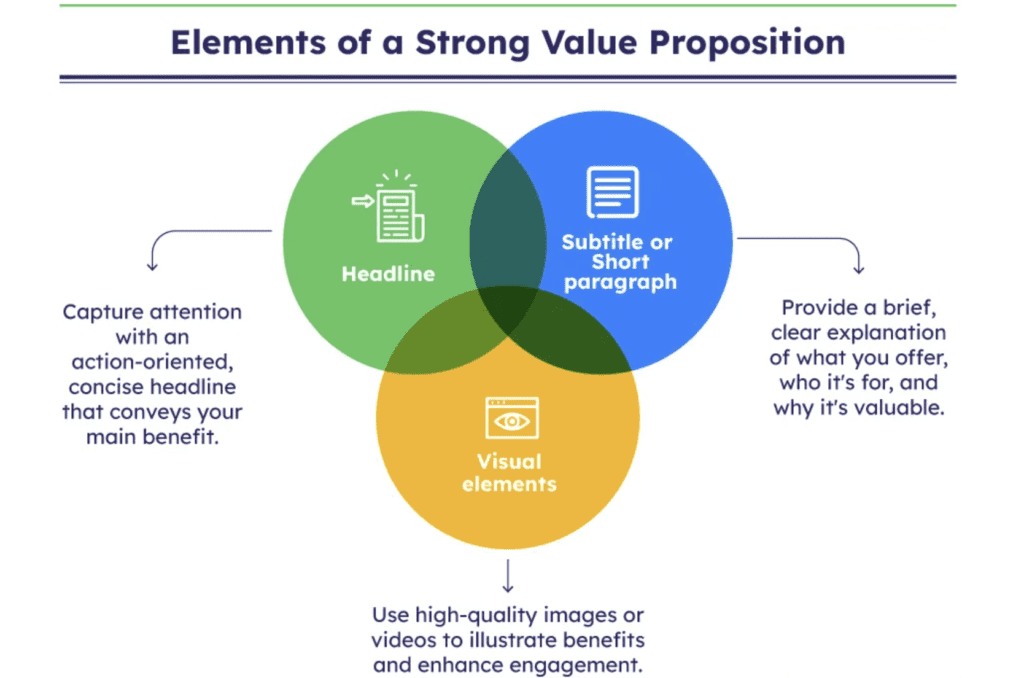
Once again, the foundation for crafting a unique value proposition is a deep understanding of your audience’s psychographics. What fears drive your prospects? What hopes do they have for products in your category? The answers to these questions enable you to craft messaging that feels like a solution to real problems rather than an intrusive advertisement.
Differentiation strategies
Differentiation in digital marketing goes far beyond simple positioning. It’s about creating a unique customer experience through content that doesn’t just inform but also transforms brand perception. One of the most effective approaches is developing an innovative strategy based on a combination of market research data and creative formats for presenting information.
Social media, especially LinkedIn for the B2B segment, offer unique opportunities to demonstrate expertise through case studies and trend analysis. However, real differentiation occurs when you don’t just repeat successful cases of competitors but suggest your unique perspective on solving the target market’s problems.
Highlighting unique selling points
The only way to stand out in the flow of monotonous content is to emphasize the truly unique aspects of your offer. This ability requires a thorough competitive analysis and an honest assessment of your strengths. It’s important to understand that uniqueness is not always in the product—sometimes it lies in the way it’s presented, the packaging of valuable ideas, or the format of interaction with the audience.
Optimizing content to highlight unique benefits means creating materials that:
- Focus on the specific needs of narrow segments of the target audience
- Offer step-by-step guidance on solving problems that competitors bypass
- Demonstrate real performance indicators through specific metrics and conversion rates
It’s enough to understand these aspects only once. And then you will have a permanent foundation for creating content that can convey value.
Case studies of successful differentiation
Real cases of companies that were able to achieve brand recognition through a unique content marketing strategy are especially valuable for understanding the principles of successful differentiation.
Consider the example of a startup that was able to take a leading position in a competitive niche through the competent implementation of personalized content. It was crucial for them to create high-quality content that didn’t just talk about the product but also educated the audience on solving related problems. Through a series of webinars and email marketing, they were able to not only increase engagement but also significantly improve lead generation rates.
Their marketing campaigns were unique in that they used real-time data to continually adjust their strategy. By analyzing key performance indicators (KPIs) like engagement rates and conversion dynamics, they were able to create truly effective content that resonated with the pain points of specific segments of their target market.
Content creation and distribution channels
In today’s digital ecosystem, choosing the right channels for content distribution is as important as creating the content itself. A smart content strategy requires a deep understanding of where your target audience consumes information and makes decisions. Social media platforms like LinkedIn for B2B or Instagram for consumers offer unique opportunities for personalized messaging. However, this is most effective when different channels work together to create a unified customer experience.
Automating distribution processes through specialized platforms allows you to optimize your marketing efforts and achieve better conversion rates. At the same time, it’s important to constantly analyze the performance metrics of each channel in real time to promptly adjust your roadmap. Companies that have learned to harmoniously combine organic distribution with targeted marketing campaigns gain a sustainable competitive advantage. They manage to create that very high-converting content.
Choosing the right content formats
Content formats should not only correspond to digital marketing trends but also solve specific business strategy problems. Webinars and step-by-step guides are great for lead generation, while case studies and infographics are better suited for increasing brand awareness, whilst interactive formats and microcontent provide deeper engagement of potential customers. The key principle in choosing formats is to focus on the specifics of your target audience’s perception of information.
For example, a business focusing on HVAC marketing can find success by using educational videos and step-by-step guides that demonstrate expertise while solving real customer problems.
It’s important to remember that even the most innovative format will not work if it doesn’t carry valuable ideas and doesn’t respond to the real pain points of the audience. Competitor analysis can suggest successful directions, but differentiation and the creation of a unique value proposition are the most effective.
Multi-channel distribution strategies
It’s important to accept the fact that a multi-channel approach doesn’t equal mechanical duplication of the same content on all social media platforms. True multi-channel implies the adaptation of key messages to the specifics of each channel and the audience that is ready to read you there. At the same time, it’s crucial to maintain the overall brand identity.
It’s also necessary to build a distribution system where each channel fulfills its specific function in the sales funnel. Search engine optimization (SEO) attracts new traffic, email marketing maintains relationships with the existing base, and social media increases engagement. By measuring key performance indicators for each channel, you’ll quickly begin to create high-quality content that will perform equally well at all stages of the customer journey.
You should pay particular attention to the integration of different channels with each other. Consistency and alignment of marketing initiatives significantly increase the overall effectiveness of the content strategy and help to form a holistic perception of the brand among the target market.
Measuring and analyzing content performance
In digital marketing, content creation is only half the battle. Without a competent system for measuring performance, even the highest-quality content risks go unnoticed by the target audience. Analyzing metrics allows you to not just state facts, but to identify deep patterns in how users interact with your materials. This is what turns standard marketing efforts into a well-thought-out content marketing strategy that gives a real competitive advantage.
It’s necessary not only to collect data but also to be able to interpret it, linking dry numbers with business strategy and promotion goals. For example, high social media engagement rates may not correspond to conversion rates, which indicates the need to revise the value proposition.

Key performance indicators
Defining the right KPIs is the foundation for assessing the success of any content marketing strategy. For lead generation, this could be the number of completed forms after watching a webinar, and for increasing brand awareness, the percentage of users who remembered your value proposition.
Particular attention should be paid to analyzing the customer experience at different stages of the sales funnel. For example, the conversion rate from visitor to subscriber and from potential client to buyer. These metrics help optimize not only individual content elements but also the entire audience engagement roadmap. It’s important to consider the demographic characteristics of the target market, as the same KPIs can be interpreted differently for different segments.
Analytical tools and methods
Platforms like Google Analytics or specialized CRM systems track how users interact with different types of content, from infographics on LinkedIn to step-by-step guides on your website.
An innovative analytics strategy involves a combination of quantitative and qualitative methods. A/B testing of headlines, heat maps of user behavior, sand scroll depth analysis—all these methods help you understand which elements of your high-quality content resonate with your audience’s pain points. Competitive analysis tools are especially valuable, allowing you to compare your metrics with similar marketing campaigns of direct competitors.
Automation of data collection and processing operations significantly simplifies the implementation of comprehensive analytics of a marketing strategy. The combination of technological capabilities and marketing expertise allows you to create truly effective content that does not just gain views but solves specific business problems.
Integrating AI and machine learning in content strategy
Artificial intelligence technologies are radically changing the approach to content creation, allowing you to move from mass production to intelligent personalization. It’s worth learning how to use them. Unlike traditional methods, AI analyzes the behavior of the target audience in real time, revealing hidden patterns and non-obvious preferences. This gives companies an unprecedented competitive advantage, allowing them to offer exactly the content that will be most relevant to each specific user.
Automating processes using machine learning optimizes not only content production but also its distribution. Algorithms can determine the optimal publishing time and the most suitable social media platforms, and even predict the potential virality of materials. For a business strategy, this means the ability to significantly increase conversion rates while reducing marketing efforts and budgets. These technologies are especially valuable for startups, allowing them to compete with large players due to more accurate targeting and personalization.
AI-driven content personalization
Personalized content has ceased to be a luxury and has become a mandatory element of a successful marketing strategy. Today’s AI-powered systems analyze vast amounts of data on demographics, behavioral patterns, and customer experience to create unique value propositions for each audience segment. This is no longer just a name-drop in an email newsletter, but a complex system of tailoring messages to specific pain points and stages of the buyer’s journey.
AI allows you to optimize content marketing to an unprecedented scale. For example, the same article can automatically adapt to different groups of potential customers, changing the emphasis, examples, and even visual design. On LinkedIn, this may be a strict tone with an emphasis on case studies, while on Instagram, it may be infographics with bright visuals. This differentiation significantly increases engagement and helps strengthen brand identity.
Predictive analytics for content trends
Predictive analytics opens up new horizons for content marketing strategy, allowing you not just to react to trends, but to anticipate them. Machine learning analyzes historical data, competitor activity, and social media conversations to predict which topics and formats will be most in demand by target audiences in the near future.
To implement these predictions, sophisticated algorithms are used that process millions of signals from search engines, social media platforms, and specialized databases. They can predict a surge in interest in certain topics, the optimal time to publish webinars or step-by-step guides, and predict which pricing ideas will be most relevant for different market segments. This allows companies to keep up with the times and stay ahead of the competition by offering high-quality content exactly when audiences need it most.
Integrating predictive analytics into a content marketing roadmap is especially valuable for lead generation. Algorithms can determine which marketing campaigns and types of content are most likely to convert for different groups of potential customers. This allows you to optimize your budget and focus on the most promising initiatives, significantly increasing the return on investment in digital marketing.
Utilizing data analytics to refine content strategy
Automating data collection and processing allows you to optimize your marketing efforts by focusing only on those initiatives that really work. These technologies are especially valuable for startups and companies with limited budgets, allowing them to achieve high conversion rates without large investments.
Data-driven audience insights
Modern analysis methods allow you to go beyond basic demographics, revealing psychographic features, pain points, and the real motivations of potential customers. Competitive analysis tools complement this picture, showing which value propositions are already working for similar market players.
Social media platforms provide rich material for audience research. Analysis of discussions, comments, and reactions helps to identify non-obvious trends and requests that have not yet come to the attention of key competitors. This makes it possible to create personalized content that both attracts attention and solves specific problems of different audience segments.
Forecasting content performance
Advanced data analysis technologies allow you not only to evaluate current results but also to predict the effectiveness of future marketing campaigns. Machine learning analyzes historical data, seasonal demand fluctuations, and competitor activity to predict which types of content will be most in demand in the near future. This is especially valuable for planning large initiatives, such as launching webinars or large-scale SEO campaigns.
Predictive models help optimize budget allocation by focusing resources on the most promising areas. For example, they can predict that an infographic on a certain topic will receive twice as much engagement on the site as a traditional article. Such insights allow you to create high-quality content with maximum impact, strengthening brand awareness and brand identity among the target audience.
Conclusion
A modern content marketing strategy is a symbiosis of creativity and analytics, where the art of content creation is complemented by the accuracy of data and forecasts. From deep audience understanding to the integration of AI and predictive analytics, each element works to create a sustainable competitive advantage. Companies that have learned to turn information into valuable ideas and data into personalized value propositions receive not just subscribers but loyal customers and partners.
Use all the opportunities to create a truly competitive advantage with ready-made solutions from Omniscient Digital. A full cycle of marketing support will help to reach the desired results faster.
Ready to elevate your strategy? Contact us or download actionable resources to get started today.

